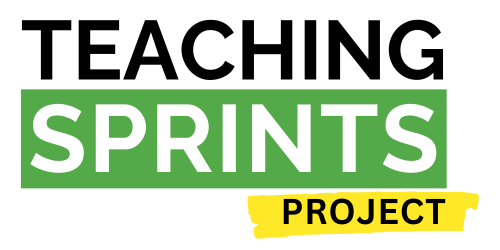A Starter for Regularly Checking for Understanding
Check responses of all students
(Mini Whiteboards)
Checking the responses of all students is a helpful way to gather more evidence of student learning in the classroom.
🧩
What problem does it solve?
When we gather responses from only a few students, we can easily make decisions in the classroom based on a poor sample size.
❓
Why should I use it?
As Professor Rob Coe states, “Learning happens in the mind. We can’t see learning, so we have to find evidence of it.” Harry Fletcher-Wood also highlights the need to track student thinking and then adapt. We want to try to track all students' thoughts at the same time.
Rosenshine also points out that by getting students to explain their answer, it forces them to make connections to their prior-knowledge. This then leads to a strengthening of their schemas.
🚩
When can I use it?
When checking for understanding.
How could you do it?
Develop clear routines
Multiple Choice Questions: they could hold up fingers, cards or enter answers somewhere.
Yes/No or True False: thumbs up or down, arms crossed or hands on heads
Use mini whiteboards: All students show their responses to a question
Elicit evidence of learning. Get all students to respond at the same time
Scan for trends
Correct misconceptions
Respond
Correct errors in a way that is respectful and helpful
Encourage students when they are right
☝️ Common Mistakes
Asking a question where we only hear from a few students who put their hand up
Basing evidence of our next steps on just a few student responses
Assuming they all understood because the one student who was asked, had the right answer
How can I make it even better?
After checking the responses of all students, “cold call” some to explain their answers.
Create a culture of not allowing students to opt-out. Meaning that all students have to respond to the question, even if it means saying that they are unsure.
For more complex concepts, you might use a “turn and talk” to allow students to collaboratively discuss their thinking prior to being cold-called.
How could I measure impact?
Teacher observations
Student feedback forms
Sharing occurs more readily from normally low-level participants
Example
-
Instructional leader Peter, had been observing some lessons of teachers on his team and was trying to create a culture of high expectations. He recognised that an area of improvement was how teachers were checking for understanding. While teachers were asking lots of questions, most of the time it was just students who put their hands up that responded and it was often the same students.
Peter had a 60 min PL session coming up and decided to run a Teaching Sprint on checking responses of all students and watched the Teaching Sprints Starter video from Bronwyn Ryrie Jones. After they watched the video, teachers validated the need to have a higher percentage of students engaged and thinking. Asking questions was something that they were already doing everyday, but they wanted to be more intentional with checking all students. They decided on a goal of twice per lesson and went through the Picture of Practice Protocol and put together this series of steps they were going to follow for this routine.
Ensure all students were paying attention - if needed prompt, “1, 2, 3 eyes on me”
Ask the question and show it on the board (if possible)
Allow thinking time
“Show me”
Have all students respond, no opt-out e.g. Hand signal, mini-whiteboards
Scan for trends
Ask at least three students why they responded the way they did
Respond and reveal the answer and address any misconceptions
To allow teachers to focus on developing the new routine. Teachers put together 10 questions that they could ask over the next week. They were a combination of general retrieval-type questions, subject-specific, multiple choice, true/false and short answers.
-
Peter had a 10-minute Check-in Meeting before their whole school staff meeting in the second week of the Sprint. The teachers reported that they were receiving a lot more information on where their students were at and the students were actually enjoying the opportunity to contribute. Some teachers said that knowing what they know now, they were actually using the new routine for the majority of the questions that they were asking. They also wanted to add to the routine: Use of Multiple choice - displayed under their chin (ensures students don’t copy each other and provides a safety net to make their own choice). Short answer - above their head (easier for the teacher to read). Making this a part of the routine allows student working memory to stay focused on thinking about their response.
Intentional observations and evidence collection
By developing a clear set of steps that the teacher needed to take, Peter was able to use this as his checklist when performing teacher observations.
-
The teachers reported that their classes had now become accustomed to the new routine. The only adjustments they proposed were to their lesson plans. Factoring in more time to check for understanding means they would not run out of time to do them properly.
Discussion of relevant evidence
The staff gave feedback that they found it useful to have Peter perform the observations because it held them accountable in following the steps that had been put in place. The accountability made it easier to ingrain the new teaching habits.
For More Information
Blog: Tom Sherrington: Five Ways to: Check for Understanding
Blog: Inner Drive: 4 Questions To Use When Checking Students' Knowledge And Understanding
Blog: Dataworks: The Importance of Checking for Understanding
YouTube: SanBdoCitySchools: Check for understanding
YouTube: EL Education: Schoolwide Structures for Checking for Understanding
YouTube: Clare Sealy: Always check for understanding - Tips for Teachers

